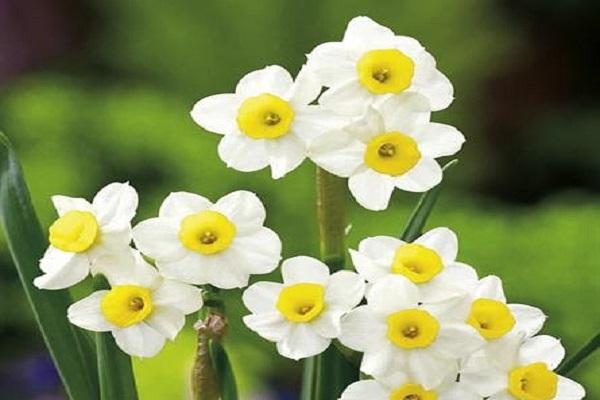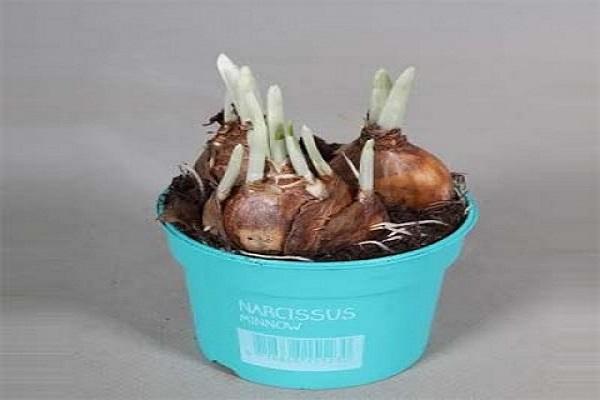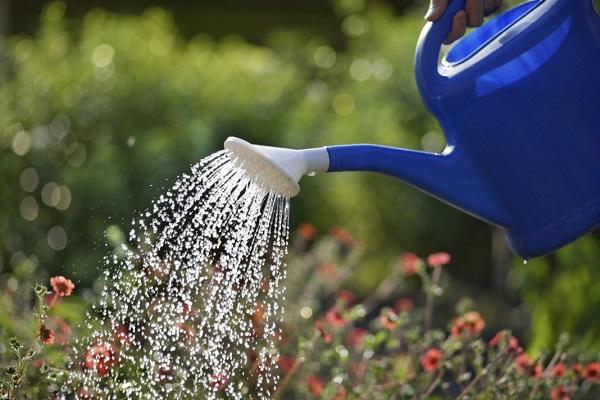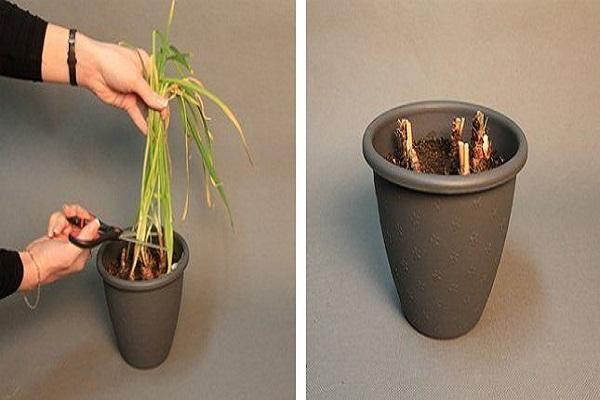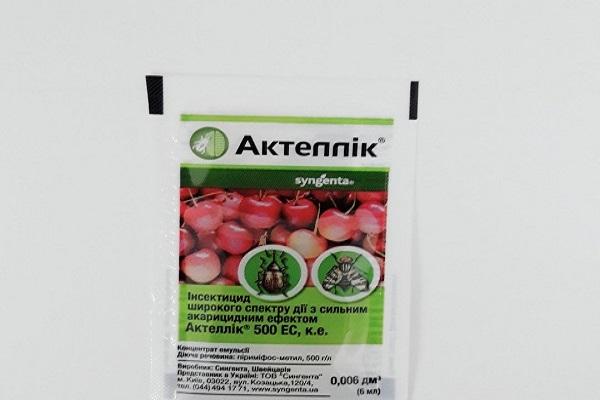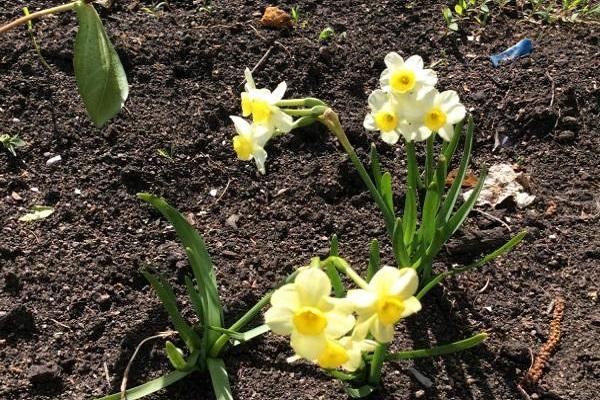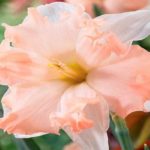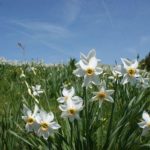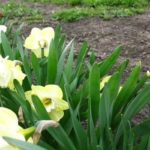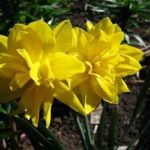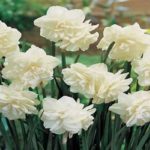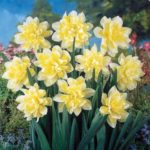Narcissus Minnow (Minnow) is a bulbous plant with graceful flowers, sitting several on one peduncle. It is one of the first spring flowers. Prefers sunny areas, fertile soil and watering in case of prolonged drought. The bulb can remain in one place for up to 5 years, delighting gardeners with delicate and fragrant flowers every spring. Another variety called Minnow is suitable for cutting.
- Description and characteristics of Narcissus Minnow
- Main advantages and disadvantages
- Subtleties of growing a plant
- When and where to plant
- Preparation of planting material
- Planting process
- Further care of the variety
- Watering and fertilizing
- Mulching and loosening
- Pruning and preparation for winter
- Disease and pest control
- Culture propagation methods
- Using botanical narcissus in landscape design
Description and characteristics of Narcissus Minnow
Narcissus Minnow is a bulbous plant 15-20 centimeters high. Belongs to the Tacet group. This plant has narrow long green leaves, white and cream 6 petal flowers with a yellow crown in the middle. Usually 4-8 small flowers grow on one peduncle. The size of one is 2.5 centimeters in diameter. Daffodils bloom in early spring and bloom for 2-3 weeks, filling the garden with an intoxicating aroma.
Main advantages and disadvantages
Advantages of the variety:
- frost resistance;
- regular flowering;
- quick adaptation to any weather conditions.
Flaws:
- needs watering during drought;
- Due to the lush inflorescences, the peduncle may break.
Subtleties of growing a plant
The Minnow variety can be planted in a flower bed. A flower can remain in one place for 3-5 years.
When and where to plant
Minnow bulbs are planted in a flowerbed before winter, that is, in September-October. They must take root before frost sets in. Daffodils can grow in sunny areas and in partial shade. These flowers prefer loamy or sandy loam soils with neutral or slightly acidic acidity. It is better to fertilize the soil where the daffodils will be planted with humus and dilute it with peat. The landing site should not be flooded with water after rains.
Preparation of planting material
Before planting, the bulbs are dried and carefully inspected. All rotten spots are cleaned, sprinkled with charcoal and treated with a fungicidal agent.
Planting process
Before planting the bulbs, prepare the soil: clay soils are diluted with peat and sand, light soils are fertilized with humus. If the soil is too acidic, add lime or dolomite flour. Daffodils are planted in groups.The bulbs are buried in the ground to a depth equal to three of their diameters. There should be more than 10 centimeters to the neighboring plant.
Further care of the variety
Daffodils adapt well to any weather conditions and will sprout every year, even if you completely forget about them. True, in order to get a beautiful flower in the spring, you need to give the plant a minimum of attention in the summer.
Watering and fertilizing
The Minnow variety is very moisture-loving. If the spring turns out to be dry, it is advisable to water this flower 2 times a week. Watering is carried out during the flowering period and for one month after flowering. At the beginning of spring, daffodils are fertilized with nitrogen substances. During the formation of buds, potassium-phosphorus additives are added to the soil.
Mulching and loosening
It is advisable to loosen the soil in the flowerbed after each watering. Overgrown weeds must be removed. It is advisable to pick off faded flowers. There is no need to touch the leaves; they should turn yellow and dry on their own. Before the onset of cold weather, the ground can be mulched with humus or peat.
Pruning and preparation for winter
After flowering, only flowers and peduncles are removed. Leave yellowed leaves until they are completely dry. In order for the flowerbed to have a beautiful appearance, other flowers (peonies) that bloom later are planted near the daffodils. They choke out faded plants with their green foliage. Minnow daffodils can overwinter without shelter.
In northern latitudes, it is better to mulch the soil with humus or peat before wintering.
Disease and pest control
The Minnow variety is characterized by resistance to various fungal diseases. The plant will not get sick if it is not filled with water and fertilized 2-3 times with complex fertilizers during the growing season.
To prevent fungal diseases (fusarium, bulb rot), daffodils can be treated with a fungicide (Fitosporin-M, Fundazol) at the beginning of the growing season. Insecticides (Actellik, Oberon, Vidat, Zolon) save you from insect pests (mites, nematodes, daffodil flies).
Culture propagation methods
The Minnow variety propagates vegetatively. Babies are formed around the mother's bulb. In autumn they can be separated and planted as independent plants. The seed method is not recommended.
Most hybrid plants do not inherit the original characteristics of the variety when propagated by seeds.
Using botanical narcissus in landscape design
The Minnow variety is planted in flowerbeds in small groups (5-10 daffodils). These flowers are usually used in group compositions. Tulips, hazel grouse, hyacinths, primrose, pushkinia, and anemone are planted next to daffodils. These plants bloom at approximately the same time. Later, brunnera, aquilegia, daylily, peonies, and irises bloom. The Minnow variety is planted in rock gardens, flower beds, and near borders.

